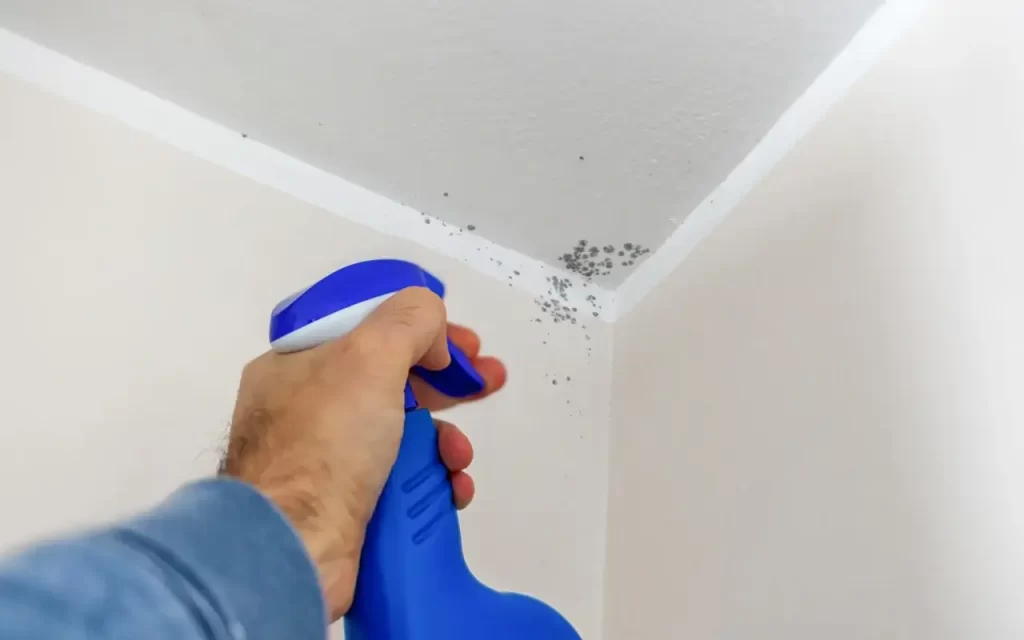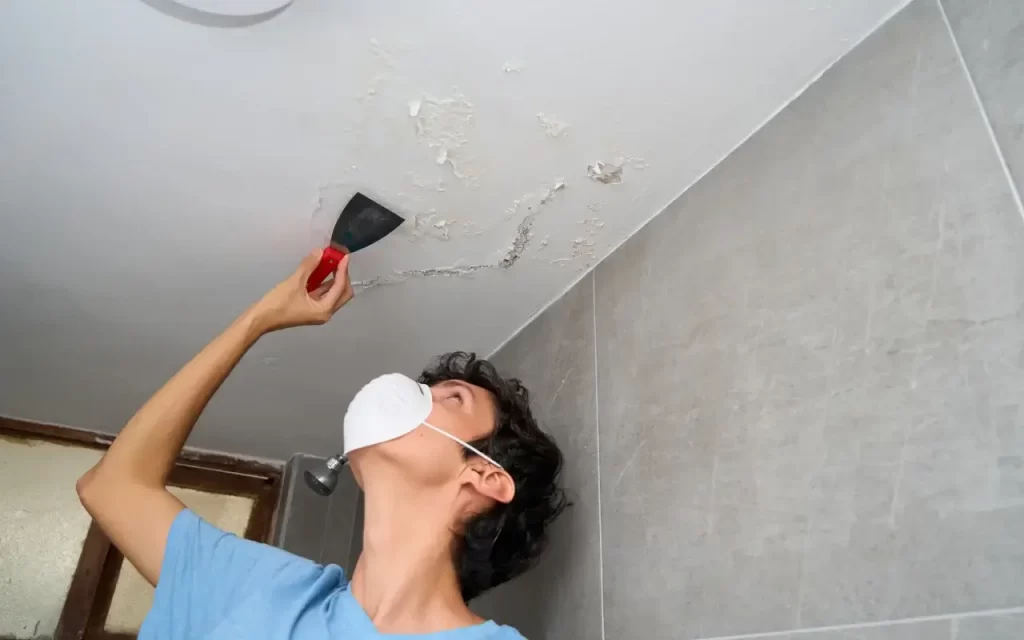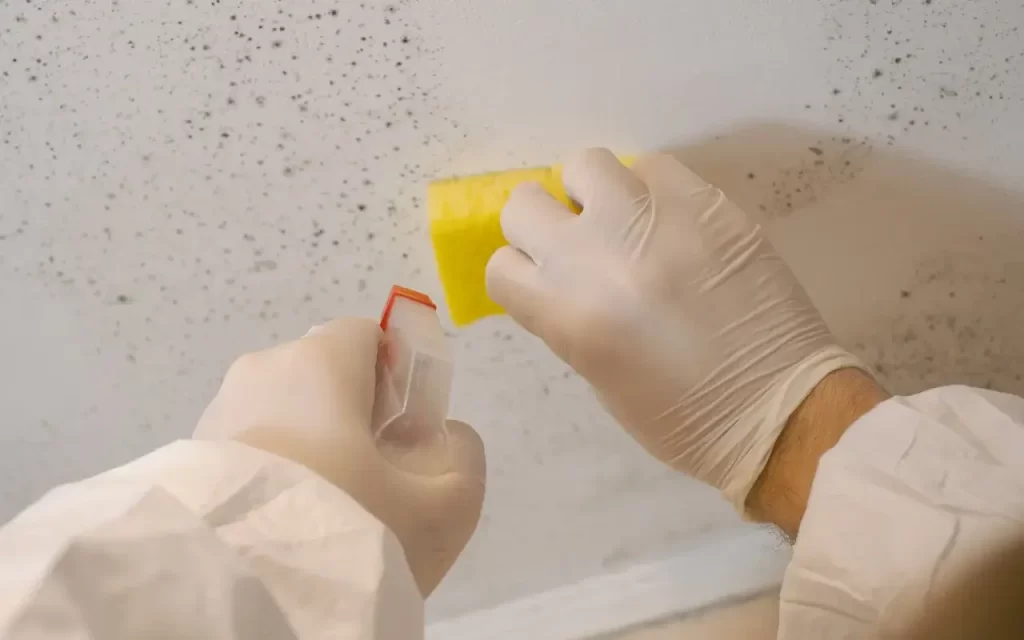Mould on your ceiling isn’t just an eyesore—it’s a sign of a deeper problem. Left unchecked, mould can trigger allergies, cause respiratory issues, damage your property, and lower the overall quality of your indoor air. It’s especially problematic in Australian homes due to the humid and warm conditions many regions experience year-round.
Whether you’re dealing with a small patch or a widespread issue, understanding how to properly and safely remove mould from your ceiling is crucial. In this guide, we’ll walk you through the process step by step, offer prevention tips, and help you know when it’s time to call in professional help.
What Causes Ceiling Mould?

Ceiling mould often forms in areas where there is excess moisture combined with poor ventilation. Common culprits include:
- Leaky roofs or plumbing
- Condensation from showers, cooking, or drying clothes indoors
- Poor ventilation in bathrooms and laundries
- Humidity trapped in ceiling cavities or roof spaces
Mould can develop quickly when these factors go unaddressed, especially during rainy or humid seasons.
Signs of Mould Growth on Ceilings
Sometimes ceiling mould is obvious—dark patches, fuzzy spots, or stains that keep growing. But mould can also be sneaky. You might notice:
- A musty or damp smell
- Discolouration or stains that slowly spread
- Peeling or bubbling paint
- Frequent allergy-like symptoms in household members
If you’re seeing any of these signs, it’s important to act quickly.
DIY Mould Removal: When and How

For small patches of mould (less than one square metre), you may be able to handle removal yourself using the following steps. But safety is key—always wear protective gear.
What You’ll Need:
- Safety goggles and a mask (preferably P2-rated)
- Rubber gloves
- Drop sheets or plastic to protect floors and furniture
- Ladder (if needed)
- Soft brush or sponge
- Cleaning solution (see below)
- Spray bottle
- Bucket with clean water
- Dry cloth or towels
- Fan or dehumidifier
Step 1: Choose a Cleaning Solution
Avoid bleach, as it doesn’t penetrate porous surfaces and often fails to kill mould roots. Instead, try:
- White vinegar (undiluted) – Effective and non-toxic
- Hydrogen peroxide (3%) – Antibacterial and antifungal
- Specialised mould cleaning products – Available at hardware stores
Pour your chosen solution into a spray bottle for easy application.
Step 2: Isolate the Area
Before cleaning, close off the room to prevent mould spores from spreading to other areas. Open a window for ventilation if possible.
Step 3: Apply the Solution
Spray the mould-affected area generously. Let the solution sit for 10–15 minutes to ensure it kills the spores. This waiting time is crucial.
Step 4: Gently Scrub
Using your soft brush or sponge, gently scrub the area. Avoid vigorous scrubbing as it can damage paint or plaster.
Step 5: Wipe and Dry
Wipe the area with a clean, damp cloth to remove residue. Then dry the ceiling thoroughly using towels and airflow (a fan or dehumidifier helps).
Step 6: Dispose of Materials Safely
Throw away any used cloths, drop sheets, or disposable gear to avoid cross-contamination.
When to Call in the Professionals
DIY mould removal is only a short-term fix if the source of moisture isn’t addressed. And in some cases, mould contamination is more serious than it looks. Call in the experts if:
- The mould covers more than one square metre
- You suspect hidden mould in ceiling cavities or walls
- The mould keeps returning
- You or others experience ongoing health symptoms
At Enviro Health, we specialise in professional mould inspections and remediation. With our in-depth knowledge and environmental testing methods, we can help identify the root cause of mould and recommend long-term solutions to keep your home or workplace safe.
Preventing Mould from Coming Back
Once you’ve removed mould, focus on prevention to avoid future outbreaks.
Improve Ventilation
- Install exhaust fans in bathrooms and kitchens
- Keep windows open when weather allows
- Use ceiling fans or dehumidifiers in humid months
Control Moisture
- Fix leaks immediately—roof, plumbing, or windows
- Ensure your roof space has adequate airflow
- Dry wet areas within 24–48 hours to prevent spore growth
Clean Regularly
- Wipe condensation from windows and ceilings
- Clean air conditioning filters often
- Use mould-inhibiting paint in high-risk rooms
The Importance of Professional Inspections

Sometimes the ceiling mould you see is just the tip of the iceberg. Moisture issues and hidden contamination behind the plaster or within the insulation can go undetected for years.
That’s why a professional inspection is a smart choice for long-term peace of mind. Services like Pre Purchase Inspections, Mould, Asbestos Audits, Asbestos Registers and Management Plans, and Workplace Contaminant Monitoring can uncover environmental risks before they become health hazards.
Not only do these services help protect your family or staff, but they also ensure you’re complying with building and safety regulations—especially in workplaces, rental properties, and older homes.
Ceiling Mould in Rental Properties or Workplaces
If you’re renting or managing a property, mould removal can become a legal issue. Tenants have a right to live in a mould-free environment, and landlords have a responsibility to fix structural problems that lead to mould.
Likewise, employers must provide a safe workplace, which includes addressing mould and moisture risks that can affect employee health. Our workplace inspections can help you meet your obligations under WHS guidelines.
Mould and Your Health: What You Need to Know
Prolonged exposure to mould can lead to serious health issues, particularly in children, elderly individuals, and those with asthma or weakened immune systems.
Common symptoms include:
- Chronic coughing or sneezing
- Eye and skin irritation
- Fatigue and headaches
- Worsening asthma or allergy symptoms
If you or anyone in your home or workplace experiences these symptoms, professional remediation is essential.
Why Choose Us?
At Enviro Health, we take mould seriously. With over 20 years of experience in environmental assessments and building health, we provide tailored solutions that address both visible mould and the underlying causes.
Whether you’re dealing with mould in a single room or across an entire property, we offer detailed reports, testing, and safe remediation strategies to protect your space and everyone in it.
Take Control of Ceiling Mould Today
Ceiling mould isn’t just a cosmetic issue—it’s a warning sign. Knowing how to remove it safely is important, but stopping it from coming back is where real peace of mind begins.
Don’t wait until the problem spreads or starts affecting your health. For lasting protection, professional help is your best option.
Got questions? Reach out to us at Enviro Health—we’re here to help create safer, healthier spaces for everyone.

